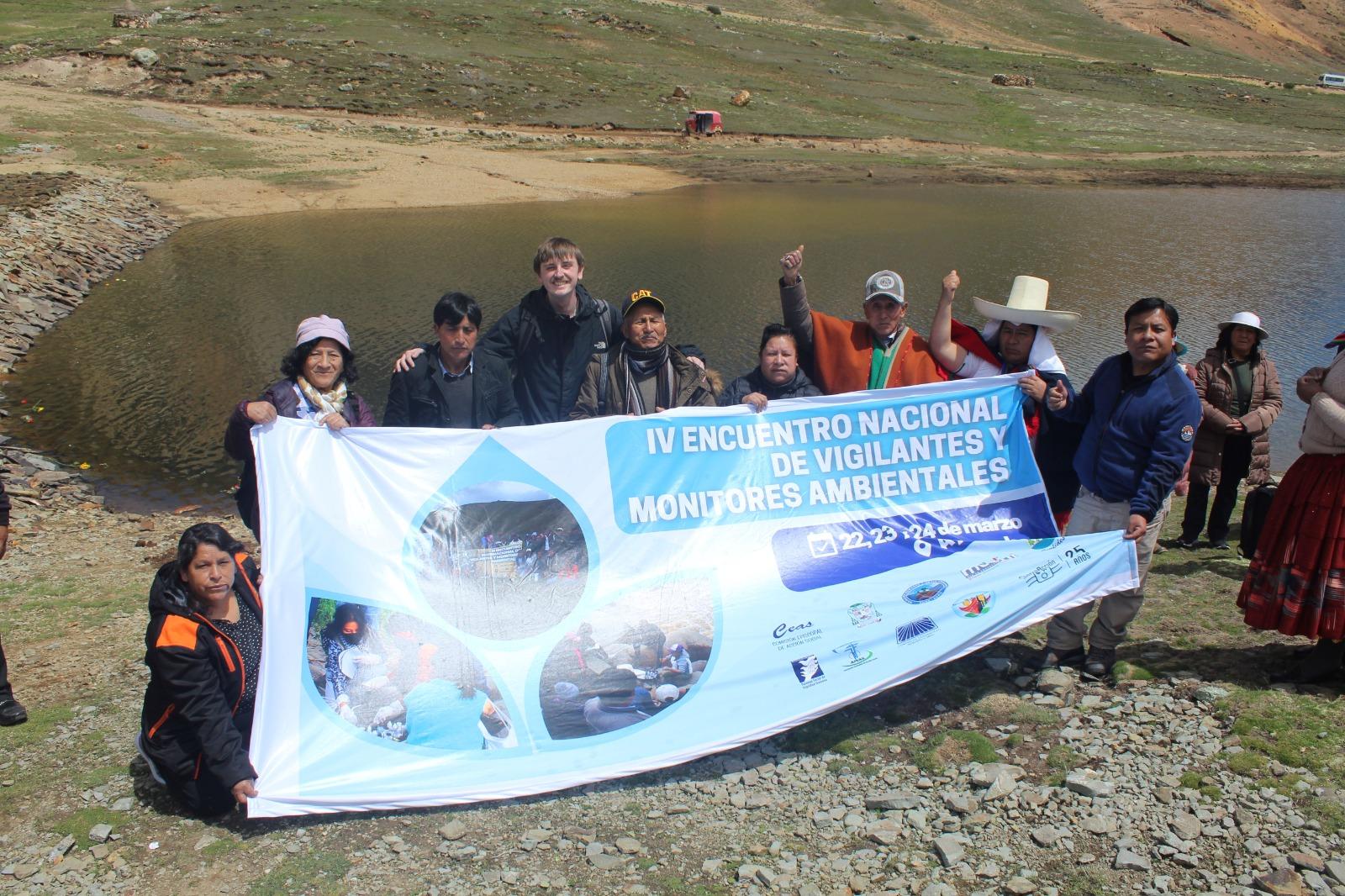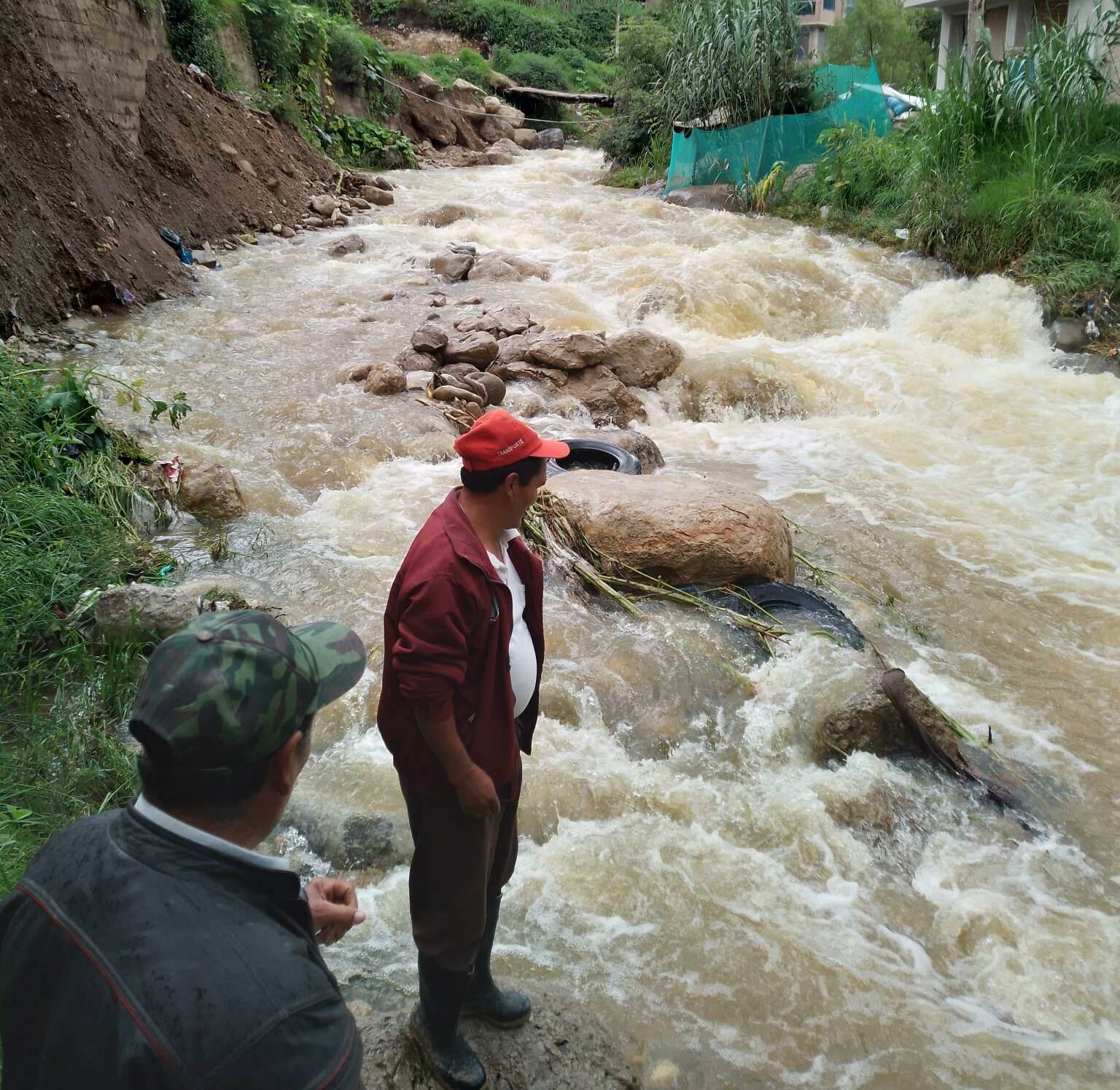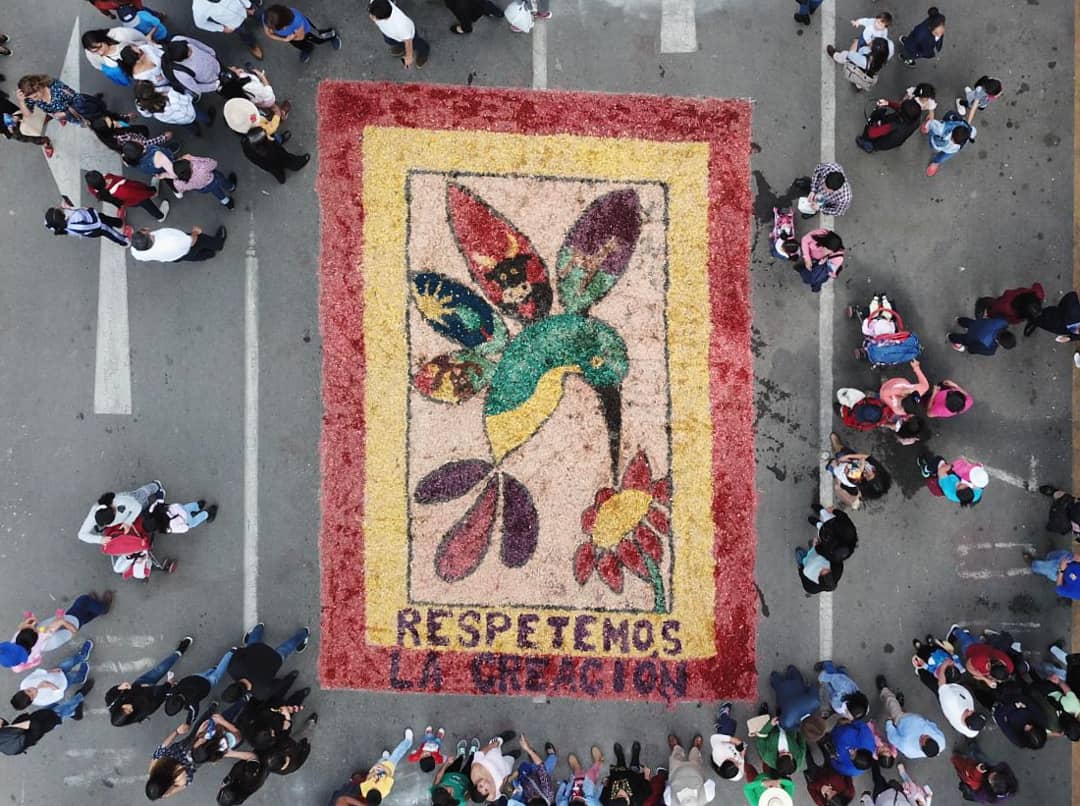IV National Meeting of Community Environmental Community Environmental Monitors and Watchmen of Peru
Last week, 22nd – 24th March, several Environmental Vigilance Committees of GRUFIDES participated in ‘The IV National Meeting of Community Environmental Watchers and Monitors’ in Ayacucho alongside committees from the regions of La Libertad, Pasco, Junín, Ayacucho, Chosica -Lima, Apurímac, Cusco, Moquegua y Puno.
The aim was to strengthen our capacities and share experiences of water monitoring in areas affected by mining projects. The delegation of Cajamarca was the largest present at the meeting by some distance.
On World Water Day, we visited the community of Santa Fe, Cangallo province in the mountains of Ayacucho, at around 4,500m altitude. There, in a powerful display of hope and defiance in the face of the destructive impact of large scale mining on our communities, regions from across Peru made an offering to the lake and sang protest songs.

River that runs alongside the community of Sante Fe, in which the committees from various regions conducted several tests to monitor the quality of the water. Photo Copyright: CATAPA
Afterwards, we practiced different methodologies of water monitoring along a stretch of the river that flows alongside the community of Santa Fe.
Although the results indicated that the river is clean and suitable for consumption, during the meeting it was revealed that the entire area Sante Fe is concessioned to the mining company BHP, without the knowledge of the local community. According to CooperAction, 27.8% of the entire region of Ayacucho is concessioned to mining companies, including at least 16% of the province of Cangallo, in which Santa Fe is located.

Map of mining concessions, region of Ayacucho, 2022. Photo Copyright: CooperAction, 2022.
During the following days, we planned actions for the upcoming year and discussed measures to escalate and strengthen our movement on the national and regional level of Cajamarca to say Yes to Water and No to Mining.
The current political crisis was also discussed, particularly in relation to mining. According to Jaime Borda of Red Muqui, the first 100 days of Dina Boluarte has seen a reactivation of the mining industry, with the looming threat that abandoned mining projects such as Conga could be reactivated.
In the face of this, representatives present at the meeting released a joint statement with several demands, including a denunciation of the assassination of 49 protestors committed by the police and armed forces, recognition by law of the work of water monitoring committees, the resignation of Dina Boluarte, the convening of new elections and the initiation of the process for a new constitution with the active participation of indigenous peoples and social organisations. You can read the full declaration here.
Step by step, via initiatives such as the water monitoring committees, we as communities impacted by mining are learning more about our rivers, and how to care for and protect them.
We are water defenders, guardians of the gift which gives us life. State institutions must respect and recognise this, and work with us to protect our water resources for the generations to come.
Written by Connor Cashell, CATAPA Global Engagement Officer Peru and volunteer for GRUFIDES.
Bibliography:
- CooperAcción (2022) Ayacucho – Mayo 2022. Available at: https://cooperaccion.org.pe/mapas/ayacucho-mayo-2022/ [Accessed 28 March 2023]
- CooperAcción (2016) Cangallo – Noviembre 2016. Available at: https://cooperaccion.org.pe/mapas/cangallo-noviembre-2016/ [Accessed 28 March 2023]
- El Peruano (2023) ‘SECTOR ENERGÍA Y MINAS INSTITUTO GEOLÓGICO MINERO Y METALÚRGICO: PETITORIO DE CONCESIÓN MINERA’, El Peruano, 30 January. Available at: https://elperuano.pe/GespoBoletinFiles/2023/01/30/2146648_1.pdf [Accessed: 28 March 2023]
- Jasmine, C. (2016) ‘Community opposition forces Newmont to abandon Conga project in Peru’,18th April, Minining.com. Available at: https://www.mining.com/community-opposition-forces-newmont-abandon-conga-project-peru/ (Accessed: 28 March 2023).

















